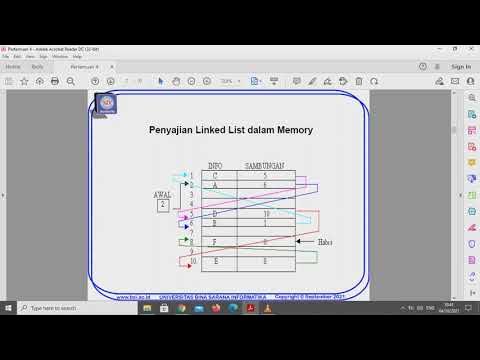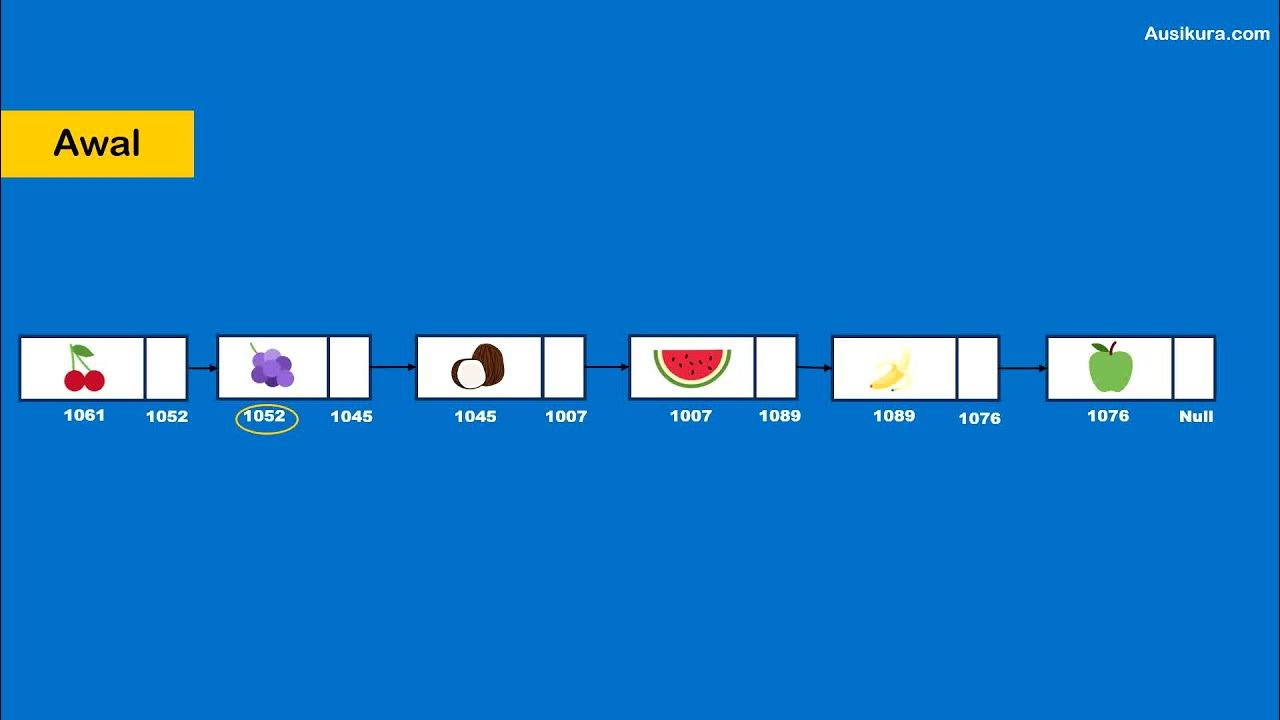2- düğüm oluşturma , değer atama, düğümleri birbirine bağlama
Summary
TLDRIn this video, the speaker introduces the concept of linked lists in data structures, focusing on nodes and pointers. The explanation begins with creating nodes, followed by allocating memory dynamically, and linking these nodes using pointers to form a linked list. The speaker demonstrates how to store data within nodes, connect them, and then traverse the list to print the values. This foundational lesson sets the stage for understanding more complex linked list operations, with a promise of further exploration in the next session, making the topic accessible for beginners.
Takeaways
- 😀 Introduction to linked lists and their comparison with arrays, highlighting how linked lists use scattered memory locations compared to arrays that use contiguous memory.
- 😀 Nodes are the fundamental building blocks of linked lists, containing variables and potentially other data structures.
- 😀 A node in a linked list has a pointer, which stores the memory address of the next node, allowing for the creation of a chain of linked nodes.
- 😀 Memory allocation for nodes is managed by the operating system, which allocates and releases memory as needed.
- 😀 The instructor demonstrates how to create a node in a programming language (Java) and how to use classes to define the structure of a node.
- 😀 A class is used to define the properties of a node, including a variable (like an integer) and a pointer to the next node.
- 😀 The nodes are created but initially are not linked to each other. Linking them requires using pointers to point from one node to the next.
- 😀 The instructor demonstrates how to link nodes using the 'next' pointer, which allows one node to reference another in a sequence.
- 😀 Traversing through a linked list is explained, with a method to iterate through nodes starting from the first node and continuing until the last node is reached.
- 😀 Practical examples are provided, with nodes holding integer values (e.g., 11, 22, 33) and how to access and print these values through the linked list.
- 😀 The video concludes by reinforcing that the topic of nodes and linked lists is a foundation for understanding more complex data structures in future lessons.
Q & A
What is the main focus of the video tutorial?
-The video tutorial focuses on explaining the concept of linked lists, node creation, memory allocation, and how to link nodes together in a programming context.
How do linked lists differ from arrays in terms of memory allocation?
-Linked lists are dynamic structures where each node contains data and a reference (pointer) to the next node. This contrasts with arrays, where memory is allocated in a contiguous block, and the size is fixed at the time of creation.
What is a 'node' in the context of linked lists?
-A node is a basic unit in a linked list, which contains data and a reference (pointer) to the next node in the sequence. The data can vary, and the pointer allows traversal through the list.
What does the instructor mean by 'memory allocation' in this context?
-Memory allocation refers to the process where the system reserves a specific area in memory for each node in the linked list, allowing dynamic storage for each node's data and the pointer.
Why does the instructor explain the creation of a class and object for nodes?
-The instructor emphasizes that in object-oriented programming, nodes are created as objects from classes. This approach allows encapsulating data and the pointer within the node structure and provides flexibility for future modifications.
What is the significance of using a 'pointer' in linked lists?
-A pointer in a linked list stores the address of the next node. It enables traversal from one node to the next, allowing for dynamic and flexible data structures compared to static arrays.
How does the instructor demonstrate linking nodes in the tutorial?
-The instructor demonstrates linking nodes by assigning the pointer (often named 'next') of one node to the address of the next node, thereby creating a chain of nodes that can be traversed in sequence.
What is the role of the 'next' pointer in a linked list?
-The 'next' pointer in each node points to the subsequent node in the linked list, enabling the list to maintain its structure and facilitate traversal from one node to another.
What does the instructor mean by 'traversing' the linked list?
-Traversing a linked list refers to the process of visiting each node in the list, typically by following the 'next' pointer from the first node to the last, to perform operations or retrieve data.
Why does the instructor mention that understanding node linking will help in understanding linked lists?
-Understanding how nodes are linked together is essential for comprehending linked lists, as this concept is the foundation of the structure's dynamic nature, allowing data to be organized and accessed flexibly.
Outlines

This section is available to paid users only. Please upgrade to access this part.
Upgrade NowMindmap

This section is available to paid users only. Please upgrade to access this part.
Upgrade NowKeywords

This section is available to paid users only. Please upgrade to access this part.
Upgrade NowHighlights

This section is available to paid users only. Please upgrade to access this part.
Upgrade NowTranscripts

This section is available to paid users only. Please upgrade to access this part.
Upgrade NowBrowse More Related Video

87. OCR A Level (H446) SLR14 - 1.4 Data structures part 1 - Linked lists

Struktur Data Pertemuan 4

Pengenalan Linked List - struktur Data (Animasi)

Learn Linked Lists in 13 minutes 🔗

Linked List Data Structure | Illustrated Data Structures

92. OCR A Level (H446) SLR14 - 1.4 Data structures part 1 - Linked lists (operations)
5.0 / 5 (0 votes)